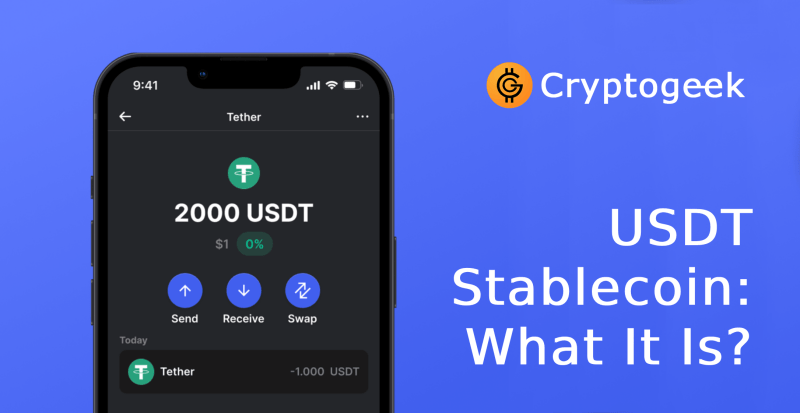What Is USDT Stablecoin? The Product That Revolutionized The Industry


In the early days, cryptocurrency and traditional fiat currencies were worlds apart, with only thin bridges in the form of private exchanges connecting the two. Everything changed with the emergence of stablecoins like USDT.
What is a Stablecoin?
Stablecoins represent a category of cryptocurrencies engineered to maintain a stable value, often by pegging their worth to a traditional fiat currency like the US dollar. Unlike volatile cryptocurrencies such as Bitcoin or Ethereum, stablecoins are designed to minimize price fluctuations, providing a more predictable medium of exchange. Various mechanisms underpin stablecoins' stability, including collateralization with reserves of fiat currency or assets, algorithmic methods, or a combination of these approaches. Their stability makes stablecoins particularly attractive for everyday transactions and as a reliable store of value in the digital economy. Notable stablecoins include Tether (USDT), USD Coin (USDC), and Dai (DAI), each with distinct mechanisms for preserving value and serving diverse roles within the cryptocurrency ecosystem.
What is USDT?
USDT, commonly known as Tether, stands as one of the foremost stablecoins in the cryptocurrency landscape, maintaining a fixed value tied to the US dollar at a 1:1 ratio. It was introduced to bridge the gap between traditional fiat currencies and cryptocurrencies, offering users a stable digital asset for seamless transactions across blockchain networks. Primarily utilized for trading activities, USDT serves as a reliable medium of exchange and a safeguard against the erratic price swings of other digital currencies like Bitcoin and Ethereum. Despite its prevalence, USDT has faced scrutiny regarding its reserve backing and transparency, with ongoing debates about its ability to maintain adequate reserves to support the tokens in circulation. Nonetheless, USDT remains instrumental in facilitating liquidity, fostering cross-border transactions, and supporting the operations of traders, investors, and businesses entrenched in the digital asset sphere.
Is USDT a Cryptocurrency?
USDT is often categorized as a cryptocurrency due to its digital nature and blockchain-based infrastructure. However, unlike many other cryptocurrencies, USDT is a stablecoin designed to maintain a constant value by pegging it to traditional fiat currencies like the US dollar. While it shares some characteristics with cryptocurrencies, such as being transferable on blockchain networks, its primary function as a stable medium of exchange distinguishes it from volatile digital assets like Bitcoin or Ethereum.
Is USDT Safe?
The safety of USDT is a subject of debate and scrutiny within the cryptocurrency community. While USDT aims to maintain a stable value and facilitate seamless transactions, concerns have been raised regarding its reserve backing and transparency. Questions persist about whether Tether, the company behind USDT, holds sufficient reserves to support the tokens in circulation. Additionally, USDT has faced regulatory challenges and legal inquiries, further complicating perceptions of its safety and stability. Despite these concerns, many traders, investors, and businesses continue to use USDT for its liquidity and utility within the cryptocurrency ecosystem.
How to Use USDT?
Using USDT is very simple - you just need to download a suitable USDT wallet. For example, Gem Wallet is a self-custody mobile wallet with open-source code and support for not only USDT but also other stablecoins and blockchains. With Gem Wallet, you can purchase USDT stablecoins using a credit card, send and receive transfers, and most importantly, securely store your crypto assets. The wallet supports USDT stablecoin on various networks, so whether you choose USDT TRC20, USDT ERC20, or perhaps USDT SPL, you'll find a suitable option for yourself.







Voici encore aucun commentaire. Soyez le premier!